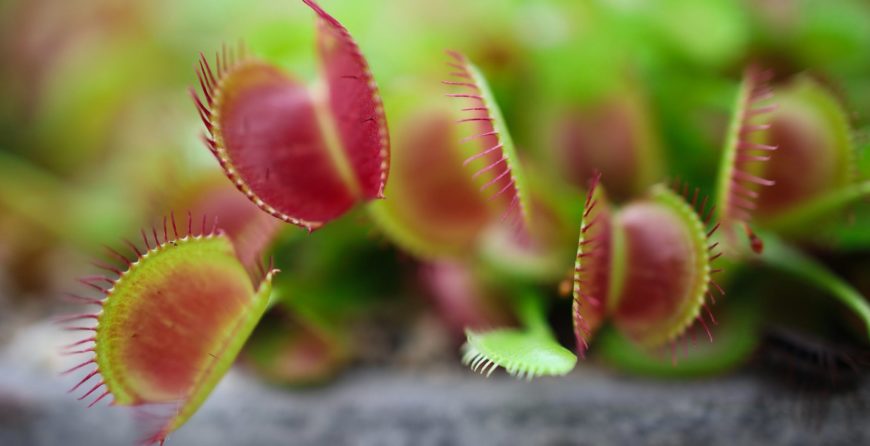The Venus’ Flytrap is one of the most unique plants you can have, as it catches insects and digests them, has unique trap leaves and sprouts flowers as well. This plant is native to South and North Carolina and grows in Damp, moist areas.
What do the traps do?
Inside each of the traps of the Venus’ flytrap, there are little hairs, that when touched by anything the trap will shut and create an airtight seal. This is so when insects sit on the trap, the hairs trigger the trap and it closes. The plant then dissolves the soft, inner parts of the insect using its digestive juices and leaves the exoskeleton of the insect. The trap can be closed up to 5 to 12 days depending on the type of insect, temperature and how old the trap is.
What do I feed my plant?
If you have an inside Venus’ Flytrap, you need to feed it small flies or insects. If you place the insect on the trap and it doesn’t close, you will need to move the insect around in the trap, so the trap hairs sense it and it closes. Do not feed your plant massive insects, as it may kill the plant.
If you have an outdoor plant, it attracts its own insects to eat through sweet nectar.
How do I care for my Venus’ Flytrap?
For a Venus’ Flytrap to thrive, it needs wet roots, high humidity, a lot of sunlight and acidic soil.
Water your plant with pure water and plant it in at least a 10 cm deep pot.
You can replant them in new soil every few years but do not add fertilizer or lime.
In the summer, make sure the plant doesn’t get too hot, over 30 C if this happens, you need to decrease the plants time in the sun. Some people recommend only two hours in the sun. If the trap leaves turn black, this means the leaves are dying and needs to be placed in an either cooler or hotter atmosphere or the plant needs to be watered or feed bugs.
In winter, the plant needs to be kept in a warm and moist area to survive. It can survive in temperatures as low as 0 Celsius. Also, during this time, the plant needs to experience a dormant period which means it needs cooler temperatures and less sunlight.
During the dormant period, the plant will turn black and will die, leaving only the rhizome. This is a normal process for this plant and after this period, in spring, is a good time to replant it in new soil and divide the plant if you would like.
Which Venus’ Flytrap do I buy?
There are many different colours, sizes and mutations in the one species of Dionaea muscipula.
If you would like the classic, all green Venus’ flytrap, it is called the “Justina Davis.”
If you want more of a unique look you can go for:
The fine-toothed sawtooth
Fused tooth
Slack’s Giant
Alien
Or the beautiful All-red Akai Ryu
If you want more information about your Venus’ Flytrap there are many blogs specific to caring for you plant.
If you would like any gardening service, like tree removal, flax removal, hedge trimming, garden waste removal and anything else call us on 0800 514 514.
You can email us on info@williamspropertyservices.co.nz .
Our friendly customer service team will get back to you with a estimate quote.



